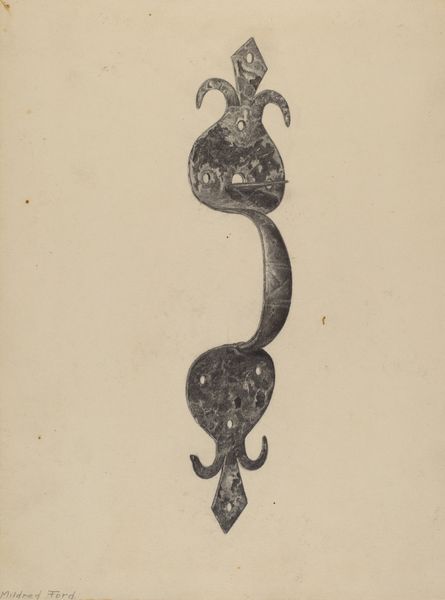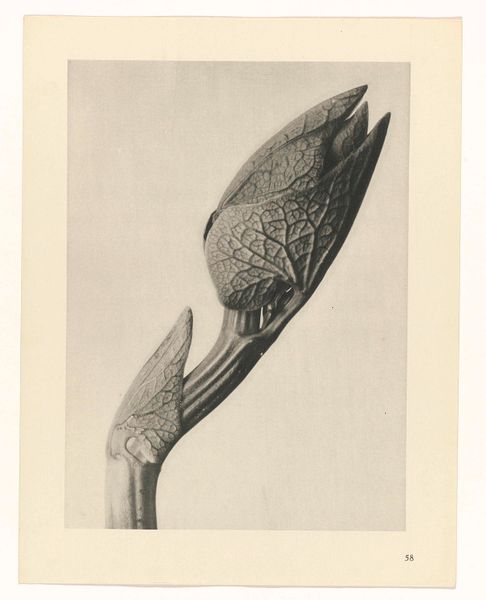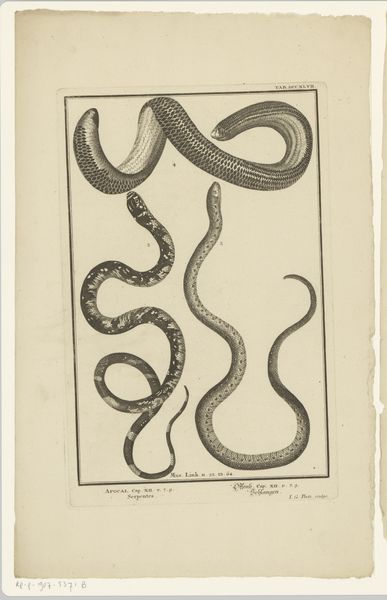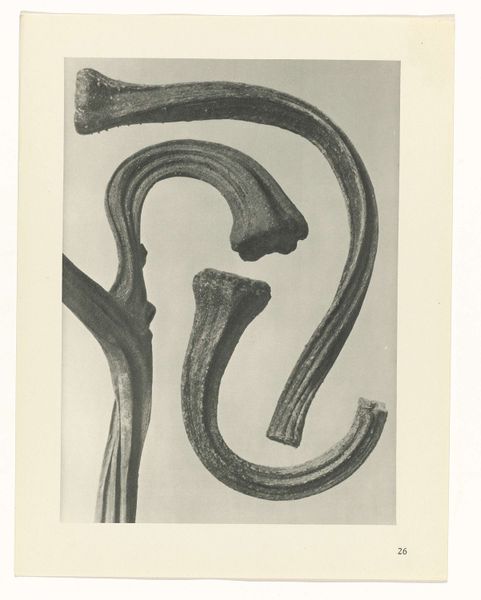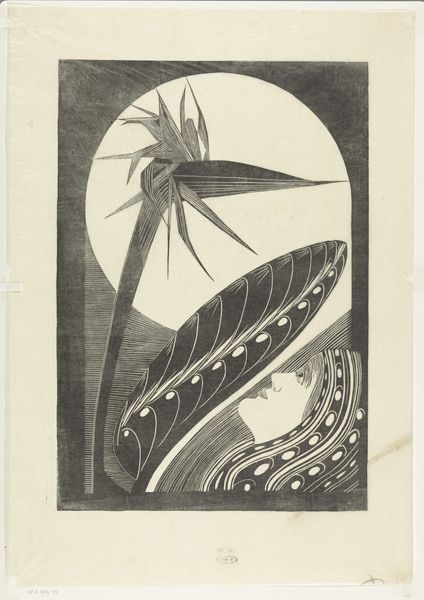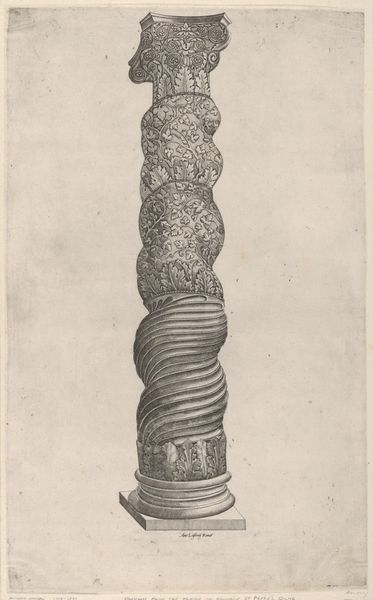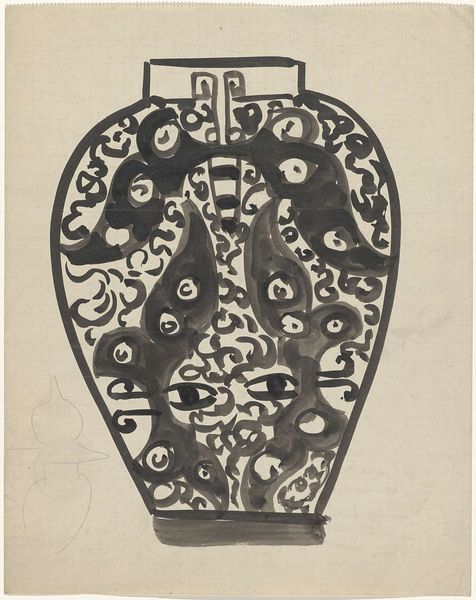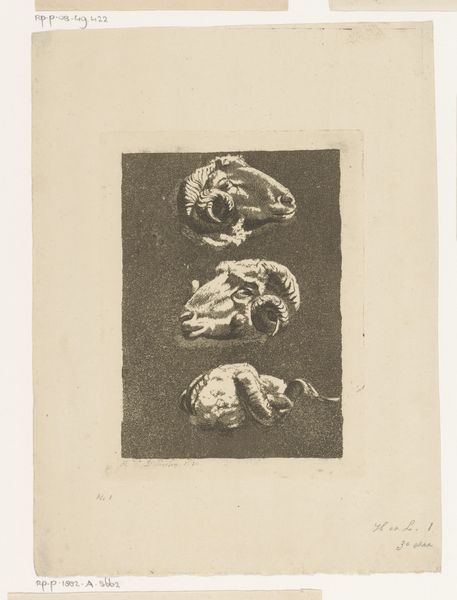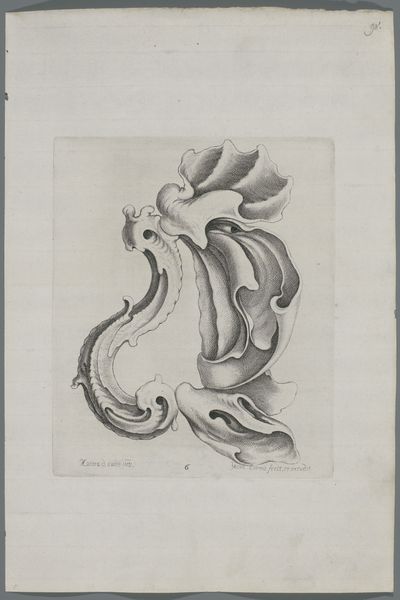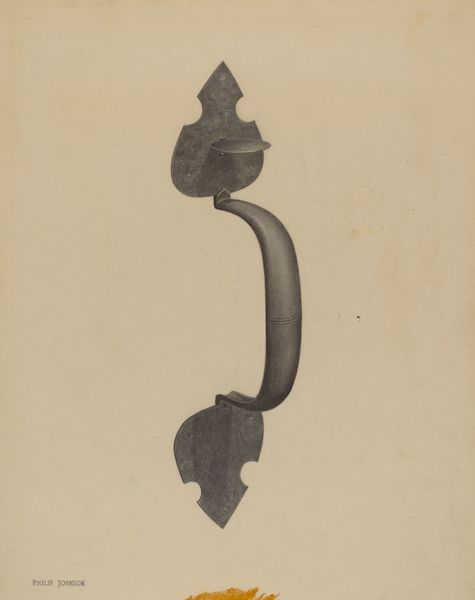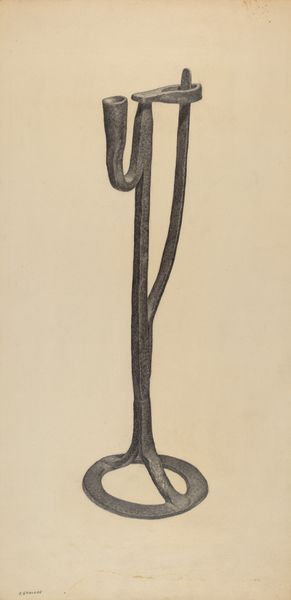
Dimensions: height 312 mm, width 242 mm
Copyright: Rijks Museum: Open Domain
Curator: Editor: So, this is Karl Blossfeldt's "Plant Study" from 1928. It’s a photograph of two ferns, and it almost looks like a piece of abstract sculpture. It’s very striking. How do you read this work? Curator: Blossfeldt's work operates at the intersection of art, science, and social movements of his time. Considering it's from 1928, just after the First World War, it's interesting to view these detailed, almost clinical images in the context of the burgeoning "New Objectivity" movement in Germany, don’t you think? Editor: New Objectivity? As in a reaction against expressionism, getting back to reality and all that? Curator: Exactly! Artists were trying to strip away emotionalism, to present things as they *are*, in a way that photography, with its seemingly objective eye, was perfectly positioned to do. Blossfeldt wasn't just showing us a plant; he was showing us the underlying architectural structures of nature, its inherent geometry, available to all if they only really looked, regardless of social status or anything else. How do you see this within Art Nouveau’s aesthetics? Editor: Ah, so there’s still that love of nature’s forms, but it’s presented in this…almost democratic way? Curator: Precisely. His photographs were reproduced in books, available to a wide public. These images played a role in educating, informing, shaping a broader public consciousness. The plant becomes a symbol, something more than just botanical specimen. In what way would you imagine Blossfeldt wanted these prints to shape public conciousness? Editor: That’s a different way of viewing photography; it wasn’t just about aesthetics. It also acted as a socio-political force to change society through education and awareness. I like this image a lot more, knowing that. Curator: And I hope you continue to bring that lens with you!
Comments
No comments
Be the first to comment and join the conversation on the ultimate creative platform.
